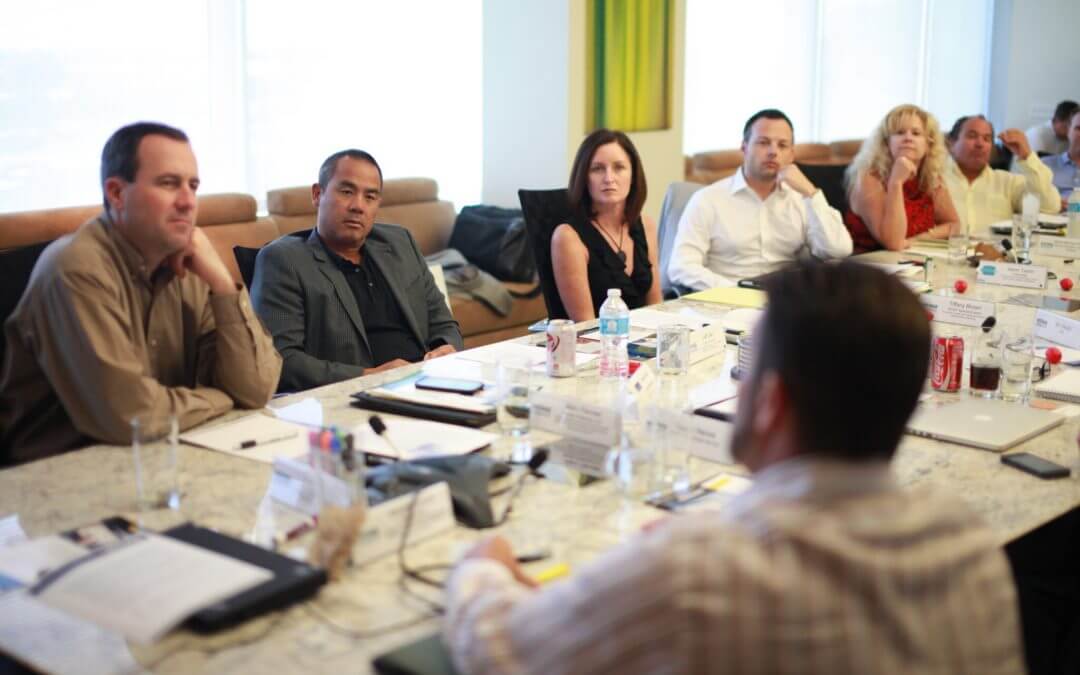Discover the importance of organizational alignment and agility in this blog post. Learn how establishing a strong CORE and building a strategy around it can lead to sustainable growth and success. Find out how alignment and agility empower your organization to thrive in an ever-changing business landscape.

A Leadership Style User Manual
In the interview above, Adam referred back to one of the more provocative ideas that arose from his hundreds of Corner Office interviews with top leaders, a Manager’s User Manual. Basically, how great would it be if managers wrote a “user manual” about their leadership style, in which they explain some of their unique preferences and quirks to the people they’re managing?
You’ve in charge of a new department, and your reports are wondering what you’re like — your pet peeves, your quirks, and what it takes to earn a couple of gold stars from you. Over a year, they will figure these things out through trial and error, through observation, and maybe through some awkward conversations, you have with them about something they’ve done or haven’t done.
If you buy a car or a new TV, it comes with an instruction manual; however, we humans don’t, and we have to work with people who may have never worked with us before. As we don’t know how each person works, we what worked in the past, but that is not guaranteed to get optimal results. So why not shorten that inevitable learning curve, and let people know what you’re like right up front?
Here is an outline of how to produce a Leadership User Manual.
Step 1 – Rough Cut
Take no more than an hour and answer these questions with the first thing that comes to mind.
-
What is your style?
-
When do you like people to approach you, and how?
-
What do you value?
-
How do you like people to communicate with you?
-
How do you make decisions?
-
How can people help you?
-
What will you not tolerate in others?
Step Two: First Draft
From the above, you have a rough draft, so now you need to add depth and smooth it out. First, use some other tools to help you refine your manual. Look for clues in assessments you have done in the past. Myers Briggs? Strength Finder? Also, re-read your performance reviews from the last few years for clues.
Step Three: Input & Workshop
Ask your colleagues to answer the questions in step one about you. Ideally, this together around a table rather than over email so that group feedback is incorporated. What is their impression? Once you have their feedback, incorporate it into yours and then share your draft and ask for feedback on what they find accurate, off, or not clear.
Step Four: Finalize
Based on the inputs from your colleagues, make a final edit.
Step Five: Revise
Once a year, dust your manual off and see if it still feels accurate to you and your colleagues. Any new insights?
An Example
Abby Falik, Founder and CEO of Global Citizen Year, did this and posted her User Manual on LinkedIn. It is below:
My style
-
I’ve been hard-wired as an entrepreneur since I was a kid.
-
I hover in ambiguity and possibility and am most energized when I’m connecting dots/people/resources that translate challenges into opportunities. I am always scanning for information to feed ideas in my mind and typically do my best thinking out loud.
-
My high expectations are matched by my commitment to support people in meeting them. I believe in giving people freedom, flexibility, and “stretch” assignments, and equipping them with the tools they need to uncover and develop their potential.
-
I’m determined to prevent my attention from being hijacked by technology. I never open my computer until I’ve written my quick list of what I intend to do; I hide my inbox to help me focus, and I’ve tried to take control of my phone by removing everything that’s not a “tool” from my home screen.
What I value
-
I value resourcefulness and proactivity. Be smart, move fast, and pivot quickly. Ask forgiveness rather than permission.
-
I’m obsessed with efficiency: I touch each email only once (respond, delete, delegate, or delay), and live by the law of 80/20 – often prioritizing promptness (i.e. 24-hour rule in following up on a meeting) over perfection. I start each day by “eating my frog” when my energy and attention are fresh.
-
I expect my teammates to value efficiency, as well. Before doing something “the way it’s always been done,” scan for an easier, cheaper, simpler way to maximize your “return on effort.” Before starting something from scratch, ask if it’s already been tried.
-
I value scrappiness and feel an obligation to our staff, Fellows, partners, and donors to focus our limited time and resources on the “real good” vs. the “feel good.”
-
I believe work-life alignment matters more than work-life balance, and that strategic self-care – whether sleeping enough, leaving work early to exercise, meditate, or spend time in nature – is the key ingredient to becoming our best, most productive and happy selves. I am religious about spending time unplugged – a day a week, and a few weeks a year.
What I don’t have the patience for
-
If you make a mistake or something is heading off the rails, tell me before the crash. Failure is great (as long as you learn quickly); surprises are not.
-
I get antsy with hypothetical musings and over-analysis. I learn best through experience and experimentation and have a strong bias toward action.
-
I default to trust, but if my confidence is shaken, it’s hard to rebuild. Ways to lose my trust: not following through, withholding important information, avoiding hard conversations, or treating others with disrespect.
-
I am turned off by entitlement, boredom and taking things for granted – it’s a privilege to do what we do, and it’s our joyful responsibility to take our work seriously, but not ourselves!
How best to communicate with me
-
Be crisp. Start with the headlines. I prefer bullet points to prose, and .PPT to .DOC.
-
I love to solve problems, remove barriers and help others move the ball forward. Come to me not just with problems, but with plausible solutions and your recommended course of action.
-
I value authenticity, honesty, and transparency. If I say something you disagree with, tell me. I am hungry to be challenged in thoughtful and constructive ways. I respect people who have the right blend of confidence and humility to know when to question someone (even the boss!), and when to defer to another’s expertise.
How to help me
-
I move quickly and don’t always catch every detail (except when it comes to our brand and communications where I’m a painstaking perfectionist). I appreciate help making sure the details are covered and flagging for me any that need my attention.
-
Nudge me when it’s time to start or end a meeting – but have (some) patience with my flexible approach to time.
-
Tell me what I need to know, not what you think I want to hear.
What people misunderstand about me
-
I am an introvert, posing as a professional extrovert. Don’t confuse my tendency to work alone in my office with being disengaged. My door’s always open.
-
I speak with conviction, but I’m not set in my thinking. I’m open-minded and always delighted to be shown a better way. I make decisions quickly, but if you give me reasoning or data that points in another direction, I’ll happily change course.
Finally, I may be the boss, but I’m also a person, a teammate and a messy work-in-progress. I’m committed to always getting better at my job, and becoming a wiser, kinder and more impactful human.
CEOs and leaders have gotten very positive feedback from their colleagues and subordinates who have received these user manuals. Shouldn’t you consider preparing yours?
© 2019 Marc Borrelli All Rights Reserved
Recent Posts
Align and Thrive: The Importance of Organizational Alignment and Agility
How to Achieve Smart Time Management: 10 Tips for Busy Professionals
When you are a busy professional running your own business, it can often feel like there aren’t enough hours in the day to accomplish everything. Being strategic with your time is the best (and possibly the only) way to achieve all of your daily tasks. If you are...
5 Strategic Leadership Skills Every Manager Needs
So often, people view leadership as a talent: you’re either born with this quality or you’re not. However, this is not always the case! In reality, good leadership is made up of skills, and anyone can learn how to improve. Some people may pick up leadership attributes...
How the Sellability Score is Calculated: The Ultimate Guide
Do you have questions about how to calculate your business’s sellability score? Whether you’re looking to sell your business in the near future or years from now, understanding your sellability score will help you thrive. The sellability score identifies the...
The Top 5 Benefits of the Entrepreneurial Operating System
As an entrepreneur running your own business, you know there are bumps in the road and struggles that both you and your business will face over time. However, with the right people and tools at your disposal, you can anticipate what’s coming, plan for it, and continue...
5 Ways to Use Email Automation to Boost Traffic
Every single business in the world wants to evolve and grow. This will happen using a variety of techniques and strategies. In 2022, digital marketing is more than a household name, and most companies will adopt at least a few ideas when long-term planning and coming...
6 Questions To Ask A Potential Business Coach Before Hiring Them
Many entrepreneurs consider executive business coaching when they start struggling on their professional path. A small business coach is an experienced professional mentor who educates, supports, and motivates entrepreneurs. They will listen to your concerns, assess...
3 Ways Proper Long Term Strategic Planning Helps Your Business
Dreams turn into goals when they have a foundation of long-term strategic planning supporting them. They become reality when the ensuing strategic implementation plan is executed properly. With Kaizen Solutions as their strategic planning consultant, small and...
What is a Peer Group, and How Can it Improve Your Career?
If you are a CEO or key executive who has come to a crossroads or crisis in your career, you'll gain valuable insights and solutions from a peer group connection more than anywhere else. But what is a peer group, and how can that statement be made with so much...
Profit and Revenue are Lousy Core Values
As I mentioned last week, I am down with COVID and tired, so spending more time reading rather than working. I read Bill Browder's Freezing Order this weekend, and I highly recommend it. However, at the end of the book, Browder says that oligarchs, autocrats, and...












